When trekking in the Himalayas, purifying the water you consume is crucial. The mountainous region is known for its pristine beauty but also the potential presence of harmful microorganisms in natural water sources. Drinking contaminated water can lead to various illnesses and diseases, ruining your trekking experience and possibly even endangering your life. Therefore, it’s crucial to invest in a reliable water purification system or method, such as boiling, filtering, or using chemical treatments, to ensure the safety of your drinking water. Taking these precautions allows you to enjoy your journey through the majestic Himalayas with peace of mind and good health.
Risks of drinking untreated water in the Himalayan region
Understanding the risks of drinking untreated water in the Himalayan region is important. Due to the high altitude and remote location, water sources in this area are often contaminated with bacteria, viruses, and other harmful substances. Consuming untreated water can lead to severe illnesses such as diarrhoea, cholera, typhoid fever, and hepatitis A. These illnesses can be life-threatening, especially for children and those with weakened immune systems. It is crucial to always treat water before drinking or using bottled water to avoid these risks.
Different methods of water purification
Several methods of water purification are available to ensure that the water we consume is safe and clean. One of the most common methods is chlorine, which effectively kills bacteria and viruses in the water. Another method is using ultraviolet light to disinfect the water, which is particularly useful in areas with chlorine-resistant pathogens. Filtration is also popular, as it removes impurities and particles from the water. Reverse osmosis is another effective method that uses a semipermeable membrane to remove contaminants from the water. Choosing the correct water purification method depends on each situation’s specific needs and circumstances.
1: Boiling Water
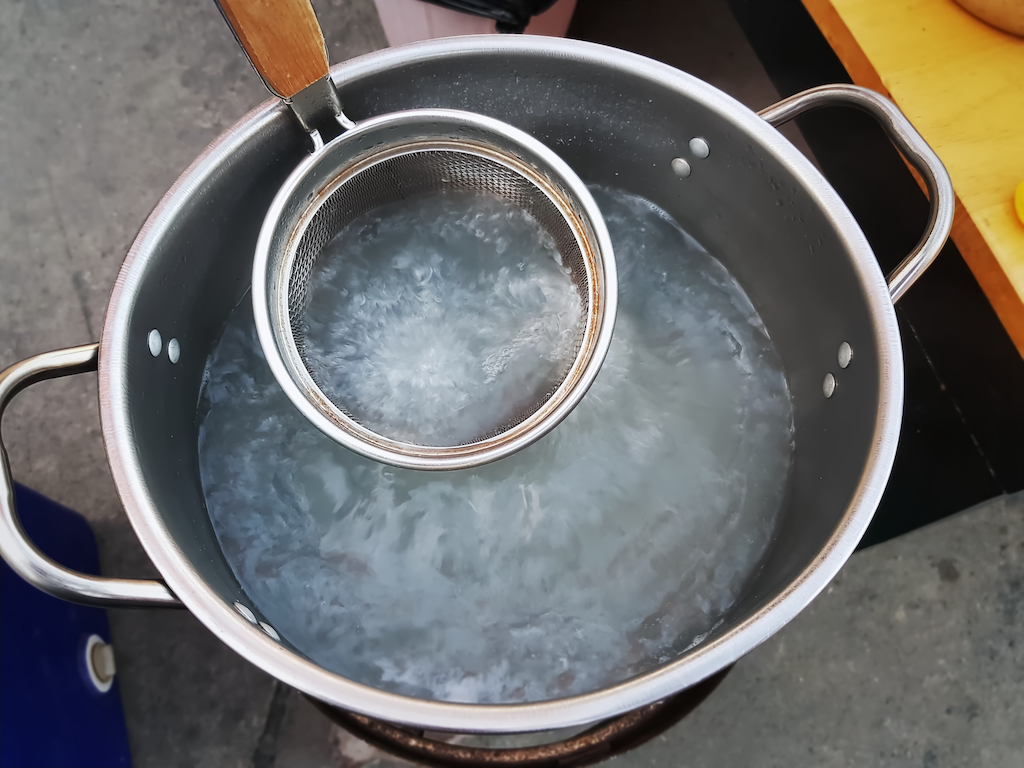
The Centers for Disease Control and Prevention (CDC) advises that boiling untreated water is the most effective purification method. If you are below 2000m, boiling the water for a minute is recommended. However, if you are above 2000m, boil it for at least 3 minutes. Since most of our treks start at an altitude above 2000m, boiling the water for at least 3 minutes is safer. Boiled water is also served in teahouses for about 1 USD per cup, and the cups are small. Although water from taps and hoses in villages is free, drinking is only safe if you treat it yourself.
2: Use of Water Purification Tablets (Chlorine or Iodine)
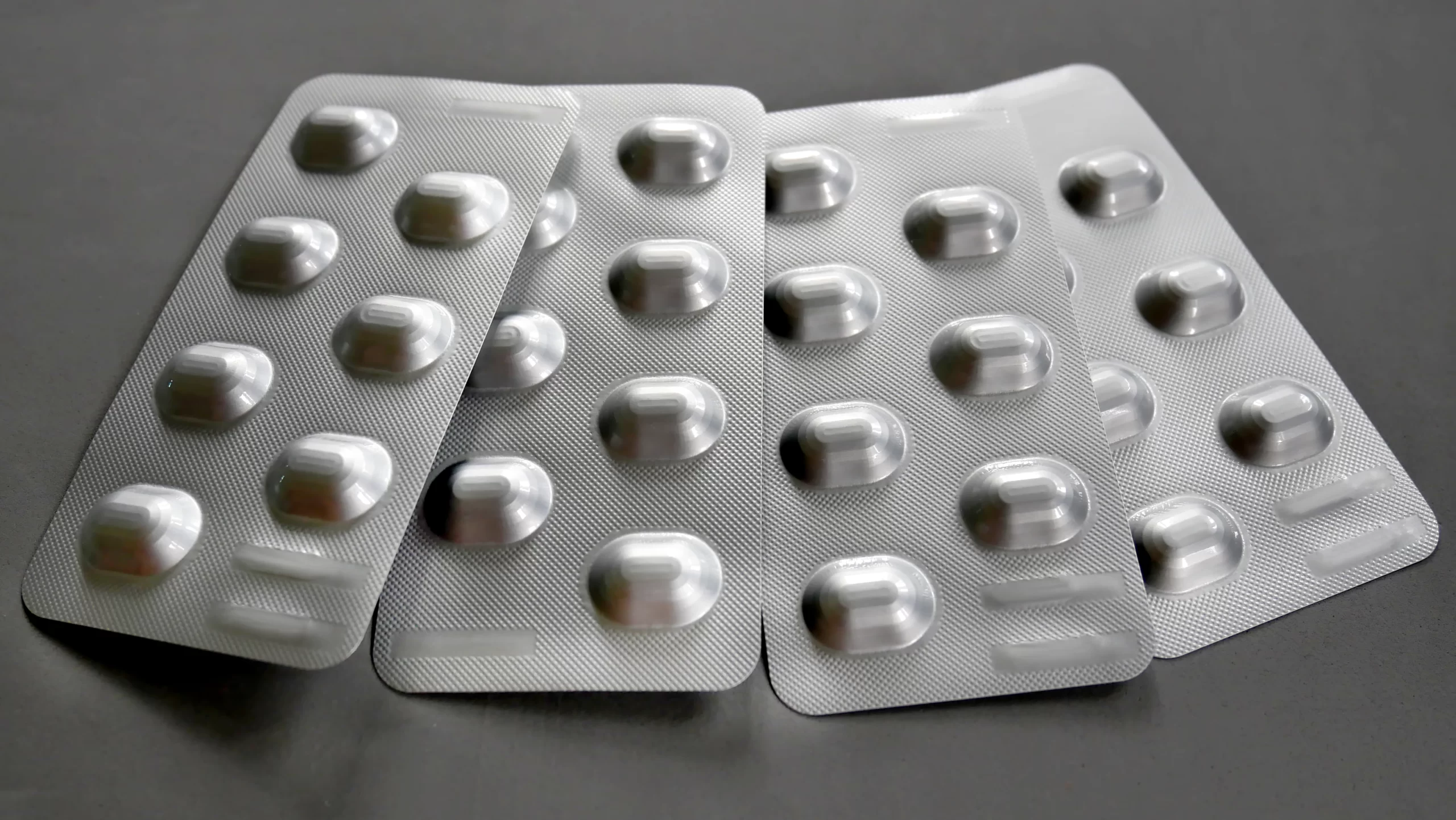
How water purification tablets work?
Water purification tablets release chemicals, such as chlorine or iodine, into the water. These chemicals kill bacteria, viruses, and other microorganisms that cause illnesses. The tablets dissolve quickly in water and are easy to use, making them popular for camping, hiking, and emergencies. However, following the instructions carefully and waiting the recommended amount of time for the tablets to work before drinking the water is important.
Advantages and disadvantages of using water purification tablets
- One of the main advantages of using water purification tablets is their effectiveness. Chlorine and iodine tablets can kill bacteria and viruses that may be present in contaminated water. This can help prevent diarrhoea, cholera, and typhoid fever.
- Another advantage of water purification tablets is their convenience. They are easy to carry and use and require no special equipment or tools. This makes them an excellent option for backpackers, hikers, and other outdoor adventurers who must treat water on the go.
- However, there are also some disadvantages to using water purification tablets. One of the biggest is taste. Chlorine and iodine have a distinct flavour that can be unpleasant to some people. This can make it challenging to drink treated water, even if it is safe.
Tips on how to effectively use water purification tablets while trekking in the Himalayas
When trekking in the Himalayas, it’s important to stay hydrated and avoid drinking water from potentially contaminated sources. Water purification tablets can be a lifesaver in these situations, but using them correctly is important to ensure their effectiveness.
First, make sure to read the instructions carefully and follow them strictly. Different brands may have slightly different instructions, so don’t assume you know what to do if you’ve used them before.
Next, try to filter out any large particles or debris from the water before using the tablets. This can improve their effectiveness and make the water taste better.
When adding the tablets to the water, wait for the time specified in the instructions before drinking. This allows the tablets to dissolve and kill harmful bacteria or viruses in the water.
Lastly, pack enough tablets for your entire trek, plus a few extra, just in case. It’s better to be safe than sorry regarding your health and safety in the wilderness.
By following these tips, you can effectively use water purification tablets while trekking in the Himalayas and ensure you stay healthy and hydrated throughout your journey.
3: Water Filters
How do water filters work?
Water filters work by removing impurities and contaminants from water. They use a physical barrier, such as activated carbon or a membrane, to trap particles and bacteria. Some filters also use chemical processes like ion exchange or oxidation to remove specific substances like chlorine or lead. Overall, water filters help improve drinking water’s taste, odour, and safety.
The advantages and disadvantages of using water filters
- One of the most significant advantages of using water filters is that they can improve the taste and smell of the water. By removing impurities, the water can taste fresher and cleaner. Additionally, water filters can remove harmful contaminants like lead, bacteria, and chlorine. This can make drinking water safer and reduce the risk of health problems.
- Another advantage of water filters is that they are often more cost-effective than bottled water. Over time, purchasing bottled water can add up and become quite expensive. Using a water filter can save money and still enjoy clean, safe drinking water.
- However, there are also some disadvantages to using water filters. One potential drawback is that they can be expensive to purchase and maintain. Depending on the type of filter, you may need to replace it frequently. This can add up over time and become quite costly.
- Another disadvantage of water filters is that they may not remove all contaminants. While filters are designed to remove many impurities, they may not effectively eliminate certain chemicals or minerals. Additionally, if the filter is not maintained properly, it can become a breeding ground for bacteria.
Provide tips on how to effectively use water filters while trekking in the Himalayas
When trekking in the Himalayas, stay hydrated and ensure your drinking water is safe. Using a water filter can help eliminate harmful bacteria and viruses. Here are some tips on how to effectively use water filters:
- Read the instructions carefully before using the filter. Different filters may require different methods of use and maintenance.
- Always start with clean water. Use a pre-filter or let the water settle before filtering to remove large particles or sediment.
- Ensure the filter is properly secured to your water bottle or hydration pack. This will prevent any leaks or contamination.
- Filter the water slowly and steadily. This will allow the filter to remove any impurities effectively.
- Clean and maintain the filter regularly. This will help prolong the filter’s lifespan and ensure it continues to work effectively.
Remember, using a water filter is only one step in ensuring safe drinking water. Practising good hygiene, such as washing your hands before handling the filter or drinking water, is also important. Stay safe and hydrated on your trek in the Himalayas!
4: UV Light/ Steripen
If you’re looking for a chemical-free way to treat your water, there’s another option available – using a steripen. This method involves using blasts of UV light and is easy to use, taking only 90 seconds to treat a litre of water. By destroying the DNA of harmful protozoa, bacteria, and viruses, it effectively eliminates them. It’s a lightweight and convenient option that many backpackers prefer.
However, it’s crucial to have a backup plan for the batteries. Some types of batteries perform better in cold weather than others. Keep the batteries close to your body when not in use to prevent them from getting too cold. You can recharge them at a cost along the trail. If you don’t want to pay for recharging, bring extra batteries or a power bank to recharge it yourself.
Conclusion
In conclusion, water purification is critical when trekking in the Himalayas. The region’s natural water sources can contain harmful microorganisms, leading to severe illnesses and diseases. However, by investing in a reliable water purification system or method, such as boiling, filtering, or chemical treatments, you can ensure the safety and cleanliness of your drinking water.
By taking these precautions, you can enjoy the stunning beauty of the Himalayas with peace of mind and good health. Always treat water before drinking and choose the appropriate water purification method for your needs and circumstances.
Please note that this blog is intended for informational purposes only. If you have any specific medical questions, it is recommended that you consult with your physician.

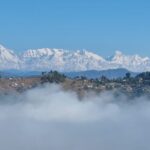
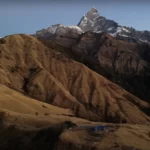
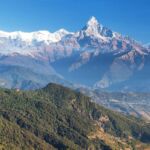

Leave a Reply